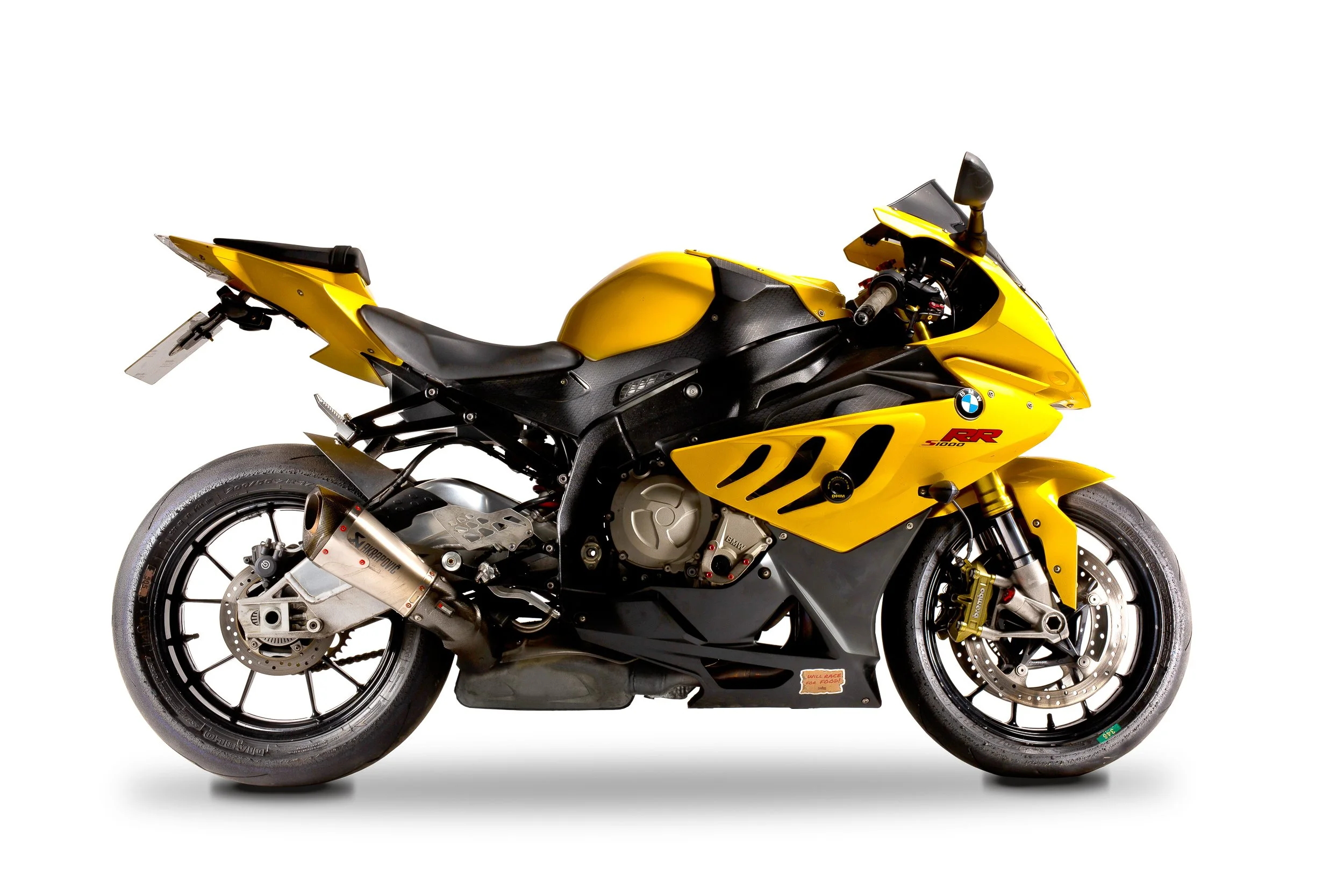Photographing the Superbike Factory in Cheshire.
As a commercial photographer, based in Northern England, I often get called in by businesses all over the UK to tell their story. One of my direct clients is the Superbike Factory, in Macclesfield.
https://superbikefactory.co.uk
I have worked for them since their conception in 2020 (remember 2020?)
The Superbike Factory have since commissioned me for a mixture of different photography projects. The first of these was to photograph some of their motorbikes for in store and online use. This was essentially product photography, but on a slightly large scale. All images were shot as cut outs, using studio lighting and shot against a white background so that the client could then drop the images onto the background of their choosing. All of the motorbike photography was done as a series of smaller shots which were pieced together as a composite in post production (photoshop). This allowed me to paint different parts of the bikes with light and piece together all of the final sections, giving more options in terms of how the final images were produced and could then create the exact feel that my client wanted.
Since then I’ve been back several times to shoot more reportage photography that documents how the business works on a day to day basis. This is typical of the type of work that I normally do as most businesses get me in to tell a story in pictures that represents how they operate, the customer journey and create a ‘feel’ for their brand. Shooting commercial photography in the workplace requires a balance of understanding the client’s brief, their brand and the operational side of their business. There are many factors that need to be taken into consideration when photographing in a working environment, such as health and safety, client confidentiality and not impacting the day to day running of the business that I’m trying to document. On the majority of shoots, I’ll work with an assistant and we’ll probably use some type of lighting, which often comes in the form of battery powered flash lighting. These production levels can be scaled up or down, depending on the size of the job.
Depending on the client’s brief, I might be asked to just use available light and this works well for a true documentary style of photography but in this case we needed a blend of available light and artificial light. The artificial (flash) lighting was used to give the images some punch and simply light up what was quite a dark setting.
The other challenge when photographing people who are not professional models, is that they generally don’t want to have their photograph taken. Often I’ll walk into a workplace and see a look of fear sweep across the room as nearly everyone dreads my arrival. I’ve stopped taking it personally. My job is to get the people involved on board and try to relax them so that the photographic process isn’t as bad as they feared. Nine times out of ten, I’ll have to do some form of portraiture and this comes in all shapes and sizes. A lot of the time, it requires lighting and setting up some form of backdrop, which has normally been specified by my client. Sometimes it can be a more obscure style and sometimes it’s purely a natural, documentary style of portraiture. The challenge is always the same, to meet the clients needs.
With Superbike Factory, they wanted to use their brand colour as the background and we chose to shoot this against a yellow backdrop, instead of using the cut out method with a white background. Often I’ll spend some time talking to each person before and during the photoshoot. This ‘warms them up’ and we generally talk about anything but work. Holidays, reality TV, kids, inappropriate jokes, anything BUT work. Once people start talking about work they tend to adopt a serious expression and, on the whole, I’m normally after happy smiling faces that represent the customer facing side of the people in the business.
I aim to get image approval on site as we shoot. Depending on the type of job and location this is either done by tethering to a laptop or by simply looking at the screen on the back of the camera. This all depends on speed of shoot and how reactive we need to be. That way the client can see what I’ve done and any amendments can be made on site before we leave for the day.
Once the day’s work is done, the second part begins. The editing and processing, or grading , is done back at my office. When I say office, I mean a desk at our home in the Cumbria. The images are uploaded onto a hard drive then instantly copied onto a duplicate hard drive, so that I always have copies in two places should there be a hard drive failure. Nightmare scenario! I’ll do a first cull, then a simple process which will apply a preset over all of the selected files and give them a slight boost in the direction of the client’s brief. For the majority of shoots, I’ll then upload the selected images as low resolution jpegs onto a private online gallery. The client can then select from this gallery and I can then work on the final choice of images and refine the processing or grading style until we get to the stage of a happy client. Depending on the client or end use of the images, I will supply final files as either jpegs or tiff files, sometimes Raw files if I’m working for an agency with creatives who want to do the processing themselves.
Of course, all of this is not set in stone. I work with clients on all types of shoots and work around the problems that they need me to solve.
The Superbike Factory have been great to shoot for. A fun, friendly and relaxed team with a clear direction and a good understanding of what is required from me. This clarity always makes my job easier and helps me to deliver the results that my client wants.
I don’t ride a motorbike, but I challenge you to walk through one of their warehouses and stop yourself from picking your dream bike. I’m up to about 6!


















